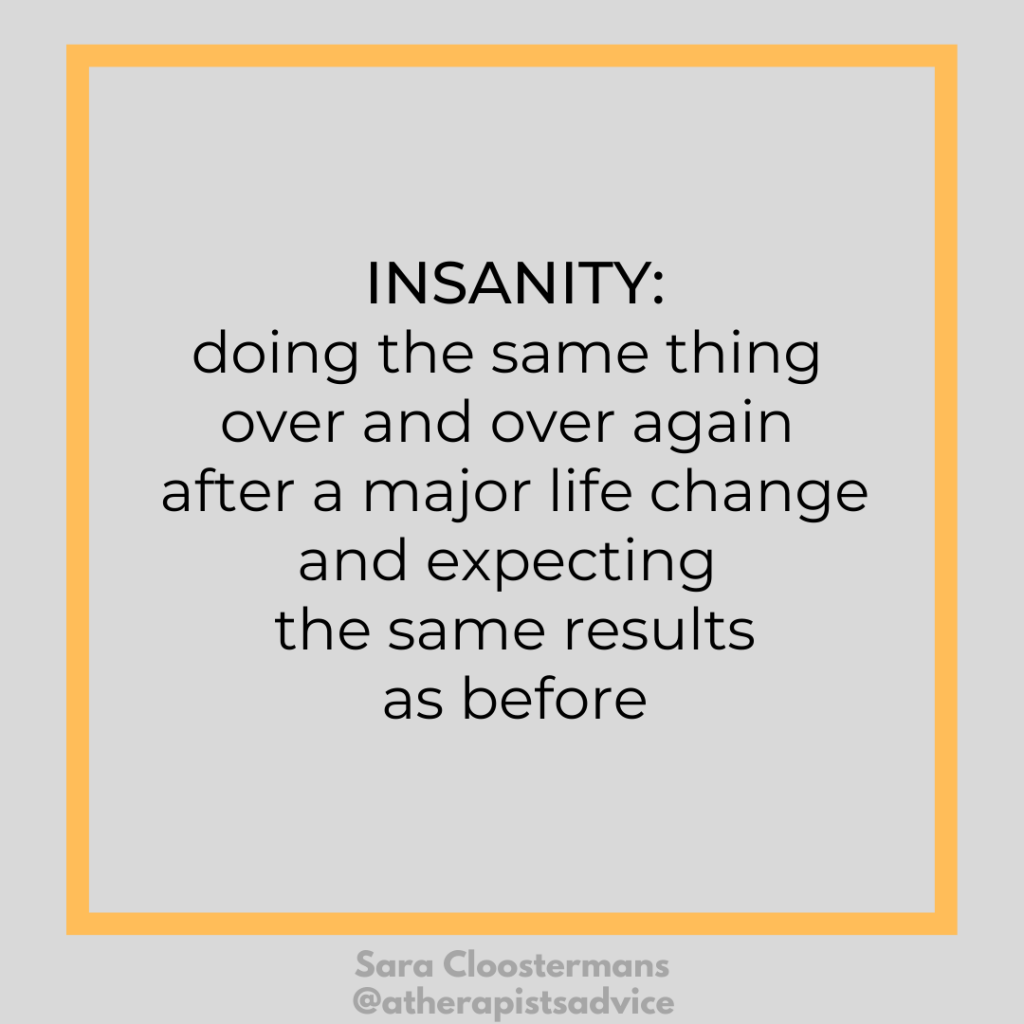As a society, we’ve created this narrative that if you dream big and work hard, you can have it all. Well, I’m about to pop that bubble. You cannot have it all. At least, not at the same time.
Here’s the truth: nobody can escape the fact that each of us only has 24 hours in the day.
We also can’t escape the need for sleep. I know our culture glorifies people who “get by” with four hours, but that mindset is killing us. Decades of research connect poor sleep with heart attack, heart failure, increased blood pressure, stroke, diabetes, lowered immune function, obesity, and accidents. Even if poor sleep doesn’t kill you, it wrecks mental health, relationships, and even productivity.
So 7-8 hours of sleep leaves us with 16-17 hours a day to work with. How shall we spend them? What can we do with the time that is left? We can do just about anything except for everything.
We only have so much emotional bandwidth, so much mental capacity, and so much physical energy. Guess what that means? You cannot do everything and be everything to everyone.
Anybody who sells you the idea that if you were just better at XYZ then you could do all of the things all of the time has no concept of what it means to be human. Knowing limits and setting boundaries around time is not laziness. It’s the only way to live a wholehearted and healthy life.
We must pick and choose. There are times we must sacrifice what we want (or often, what we think we should want) for what we want more. When we fail to do this, we run ourselves ragged, always on the “hamster wheel,” never taking care of ourselves, and not giving our best to others.

Picking and Choosing In Real Life
Picking and choosing sounds good or even easy in theory, but then we find ourselves in our real, messy, complicated lives. It can feel impossible. Everything feels important, like a “have to.”
There may be no better (or harder!) way to exemplify not being able to do it all than with parenting. So let’s look there. Here are two scenarios.
A young woman dreams of being a famous classical violinist. The best of the best. She is talented and dedicated. This woman knows that to be what she wants to be she needs to dedicate at least eight hours of daily practice on top of everything else she needs to get done in a day. What is required from her is not hobby-level interest or “I’ll get to my violin if I have time.” What is required is near perfection.
This same young woman also dreams of being an involved mother.
Of course, this woman can have both art and babies. But she may have to balance each differently in the various seasons of her life. She has to clarify her goals and redefine what success looks like at each new point, taking a realistic view of what is required of a parent.
Our violinist may need to ask:
- What if I wait longer to have children or only have one child?
- Do I have a supportive family nearby to help?
- Would crossing out “famous” from the dream of being a “famous violinist” still feel fulfilling?
- Do I only want children because the world says I need to have them?
- Do I only want to be “the best” because the world says winning is the most important thing?
A man worked tremendously hard to be top of his field in cardiac surgery. He paid his dues and matched it with a heart that cares about saving people’s lives. After grueling hours in med school, residency, and beyond, he is leading the unit in a prestigious hospital and once again putting in grueling, albeit meaningful hours.
This same man has two children who miss him and a wife with her own career who desperately wants help and connection at home.
Of course, this man can have both his practice and kids. But he may have to reconfigure his job in this season to avoid losing the relationships he has with his beloved family. He has to explore other options for making sure he isn’t lost in one dream at the expense of another.
Our cardiac surgeon may need to ask:
- What if I keep the job but step out of a leadership position to open up more family time?
- Do I only want to keep climbing the professional ladder because the world says I should?
- Are there areas I could delegate to others?
- Could I pull back 10% and still be good at what I do?
In both of these scenarios, the goals and ambitions of the woman and the man are beautiful and valid. But children and partners are also real people who need lots of time and attention.
So how do these two people work through these big questions, figure out their priorities, and choose what’s important and what isn’t?
How do we do the same?
Get Clear On Values
Navigating what to keep and what to toss from daily life comes down to values, finding them and living them out.
Values are how we want to act consistently. What you want to stand for vs. what you don’t care about all that much. What you prioritize. Unless you value death and destruction, values aren’t inherently right or wrong; it’s more about preference and personality—what makes you uniquely you.
Somebody may value power and order more than they value intimacy and fun. Or vice versa.
Somebody may value creativity and adventure more than they value skillfulness or industry. Or vice versa.
Until you get clear on your values, you will fill up your life to the brim with all the things you “should” be doing—typically all the things society applauds. And since the finite nature of time means you literally cannot do everything each week or even each year, you will find that your time is being disproportionately spent.
The truth is many people aren’t sure what their values even are. We’ve been told from a young age what we should want out of life, but we haven’t taken the time to sit down and figure out what we really want.
When You Cannot Have It All: A Values Exercise
Step 1: Set aside some time to daydream. Give yourself a solid 15 or even 30 minutes. If you could snap your fingers and have the life of your dreams, what would it look like daily?
What is it you plan to do with your one wild and precious life?
Mary Oliver
- Would you be traveling the world or operating a homestead?
- Would you be a stay-at-home parent or receiving childcare help from a nanny?
- Would you be retiring early or enjoying a career/hobby you can take with you into old age?
- Would you be on a stage performing or in an office typing quietly?
- Would you be in a bustling community or a quiet neighborhood?
- Would you be trying out that creative hobby you always wanted to try or getting back into the sport you liked in college?
Once you’ve pictured your ideal world, make a list of the values you’ve discovered.
Step 2: Next, you need to take a close look at your current life and the goals you are currently working toward. How much of what you’re doing in a day or hoping to do in a day aligns with your values?
Step 3: You also need to take an honest inventory of your circumstances.
- Your physical health and your partner’s/child’s physical health
- Your mental health and your partner’s/child’s mental health
- How much support you have from family/your community
- How much debt you have
- Education levels
- Cost of living
- Etc.
These factors are why you can’t compare the life of one person who appears to “have it all” with your life.
Step 4: Now it’s time to make changes. While some may make radical shifts, typically these are small changes at first. If you had given up the violin entirely, for example, maybe you can commit to 30 minutes of practice each day. Or if you went the other way and feel your children need more time from you, you could commit to screen-free, violin-free Sundays with playing and cooking together. For a surgeon, maybe it isn’t quitting the position at first, but learning to say no to absolutely everything that doesn’t align with the primary mission at work and home and see the difference it makes.
Practicing Gratitude For What You Can Have
“I cannot have it all right now, but I can have ____, ____, and ____. I’m grateful for these things.”
If you keep waiting and hoping you will someday figure out how to have it all, I fear you will be gravely disappointed with how your life turns out.
Instead, we can practice gratitude for what is.
When we practice gratitude for all the beautiful things we have in this season of life, we get to relish in what we do have instead of focusing on what we don’t have. And then when the tides change and things look very different (because they always will), we can be grateful for the new set of beautiful things instead of lamenting over not having it all.
Yield To Yin
- Healing Card Deck: A Therapist’s Advice 55-Card Healing Deck by Sara Cloostermans
- Book Recommendation: A Thousand Mornings: Poems by Mary Oliver
- Mantra: I AM CONTENTMENT // with diaphragmatic breathing
- Yin Yoga Asana: Half Butterfly Pose
This page includes Amazon Associate affiliate links, which means I may earn a small commission at no cost to you if you purchase a product I suggest. I only recommend products I believe in. Learn more HERE.







